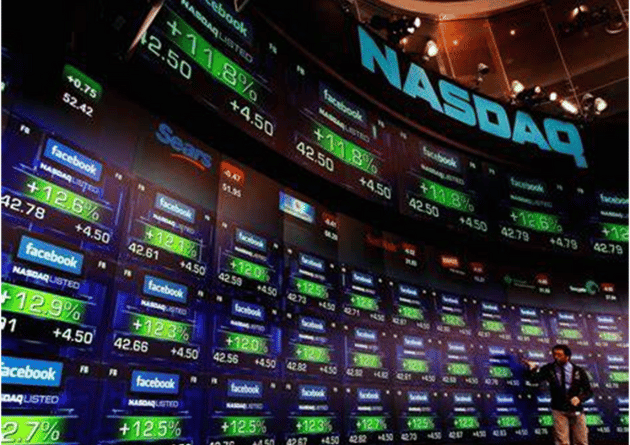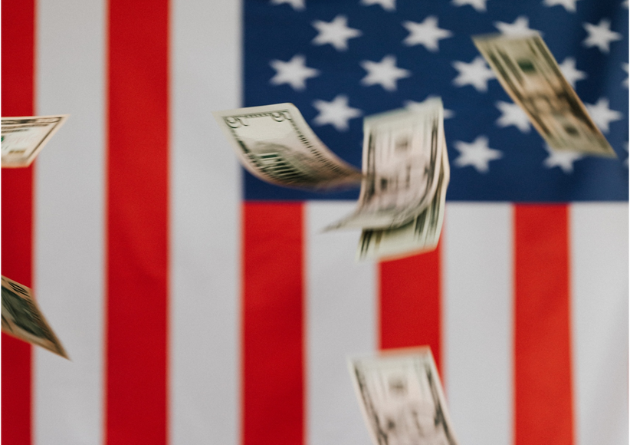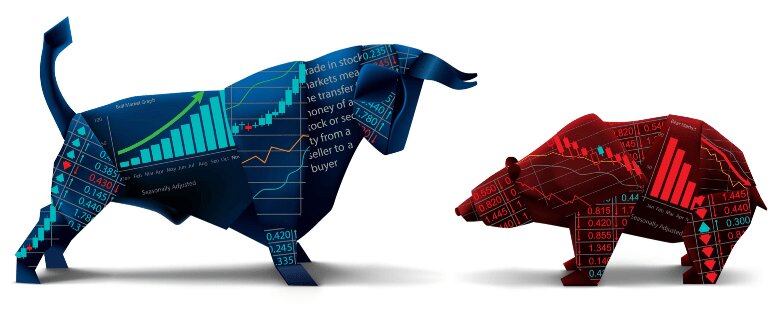US ECONOMY
The U.S. has retained its position of being the world’s largest economy since 1871. The size of the U.S. economy was at $20.58 trillion in 2018 in nominal terms. The U.S. is often dubbed as an economic superpower and that’s because the economy constitutes almost a quarter of the global economy, backed by advanced infrastructure, technology, and an abundance of natural resources.
When the economies are assessed in terms of purchasing power parity, the U.S. loses its top spot to its close competitor China. In 2019, the U.S. economy, in terms of GDP (PPP), was at $21.44 trillion, while the Chinese economy was measured at $27.31 trillion. The gap between the size of the two economies in terms of nominal GDP is expected to lessen by 2023; the U.S. economy is projected to grow to $24.88 trillion by 2023, followed closely by China at $19.41 trillion.
% SHARE OF THE GLOBAL ECONOMY

THE FEDERAL RESERVE
WHAT IS A CENTRAL BANK?
A central bank is a financial institution given privileged control over the production and distribution of money and credit for a nation or a group of nations. In modern economies, the central bank is usually responsible for the formulation of monetary policy and the regulation of member banks.
Central banks are inherently non-market-based or even anti-competitive institutions. Although some are nationalized, many central banks are not government agencies, and so are often touted as being politically independent. However, even if a central bank is not legally owned by the government, its privileges are established and protected by law. The critical feature of a central bank—distinguishing it from other banks—is its legal monopoly status, which gives it the privilege to issue banknotes and cash. Private commercial banks are only permitted to issue demand liabilities, such as checking deposits.
UNDERSTANDING CENTRAL BANKS
Although their responsibilities range widely, depending on their country, central banks’ duties (and the justification for their existence) usually fall into three areas.
First, central banks control and manipulate the national money supply: issuing currency and setting interest rates on loans and bonds. Typically, central banks raise interest rates to slow growth and avoid inflation; they lower them to spur growth, industrial activity, and consumer spending. In this way, they manage monetary policy to guide the country’s economy and achieve economic goals, such as full employment.
Most central banks today set interest rates and conduct monetary policy using an inflation target of 2-3% annual inflation.
Second, they regulate member banks through capital requirements, reserve requirements (which dictate how much banks can lend to customers, and how much cash they must keep on hand), and deposit guarantees, among other tools. They also provide loans and services for a nation’s banks and its government and manage foreign exchange reserves.
Finally, a central bank also acts as an emergency lender to distressed commercial banks and other institutions, and sometimes even a government. By purchasing government debt obligations, for example, the central bank provides a politically attractive alternative to taxation when a government needs to increase revenue.
THE FEDERAL RESERVE
Along with the measures mentioned above, central banks have other actions at their disposal. In the U.S., for example, the central bank is the Federal Reserve System, aka “the Fed”. The Federal Reserve Board (FRB), the governing body of the Fed, can affect the national money supply by changing reserve requirements. When the requirement minimums fall, banks can lend more money, and the economy’s money supply climbs. In contrast, raising reserve requirements decreases the money supply. The Federal Reserve was established with the 1913 Federal Reserve Act.
When the Fed lowers the discount rate that banks pay on short-term loans, it also increases liquidity. Lower rates increase the money supply, which in turn boosts economic activity. But decreasing interest rates can fuel inflation, so the Fed must be careful.
And the Fed can conduct open market operations to change the federal funds rate. The Fed buys government securities from securities dealers, supplying them with cash, thereby increasing the money supply. The Fed sells securities to move the cash into its pockets and out of the system.
STRUCTURE OF FED

DOLLAR INDEX
WHAT IS U.S. DOLLAR INDEX – USDX?
The U.S. dollar index (USDX) is a measure of the value of the U.S. dollar relative to the value of a basket of currencies of the majority of the U.S.’s most significant trading partners. This index is similar to other trade-weighted indexes, which also use the exchange rates from the same major currencies.
UNDERSTANDING U.S. DOLLAR INDEX – USDX
The index is currently calculated by factoring in the exchange rates of six major world currencies, which include the Euro (EUR), Japanese yen (JPY), Canadian dollar (CAD), British pound (GBP), Swedish krona (SEK), and Swiss franc (CHF). The EUR is, by far, the largest component of the index, making up almost 58 percent (officially 57.6%) of the basket. The weights of the rest of the currencies in the index are – JPY (13.6%), GBP (11.9%), CAD (9.1%), SEK (4.2%), CHF (3.6%).
The index started in 1973 with a base of 100, and values since then are relative to this base. It was established shortly after the Bretton Woods Agreement was dissolved. As part of the agreement, participating countries settled their balances in U.S. dollars (which was used as the reserve currency), while the USD was fully convertible to gold at a rate of $35/ounce.
An overvaluation of the USD led to concerns over the exchange rates and their link to how gold was priced. President Richard Nixon decided to temporarily suspend the gold standard, at which point other countries were able to choose any exchange agreement other than the price of gold. In 1973, many foreign governments chose to let their currency rates float, putting an end to the agreement.
The U.S. dollar index has risen and fallen sharply throughout its history, reaching its high point in February 1985 with a value of 164.72 and its low point in March 2008 with a value of 70.698. As of March 25, 2020, the index carried a value of 100.35, meaning that the U.S. dollar has depreciated versus the basket of currencies since 1985 but is roughly equal to its starting value in 1973. The index is greatly affected by macroeconomic factors, including inflation/deflation in the dollar and foreign currencies included in the comparable basket, as well as recessions and economic growth in those countries.
The contents of the basket of currencies have only been changed once since the index started when the Euro replaced many European currencies previously in the index in 1999 such as Germany’s predecessor currency, the Deutschemark. In the coming years, it is likely currencies will be replaced as the index strives to represent major U.S. trading partners. It is likely in the future that currencies such as the Chinese yuan (CNY) and Mexican peso (MXN) will supplant other currencies in the index due to China and Mexico being major trading partners with the United States.
ONLINE TRADING PLATFORM

CUSTOMISABLE CHARTS
Access all the features you need to analyse price movements and conduct technical analysis. We have over 95 technical indicators, chart types and drawing tools built in.
NEWS AND INSIGHTS
Stay up to date with our market calendar and in-built Reuters news stream.
TRADE ON THE MOVE
Our native mobile apps for iPad, iPhone and Android mean you can trade currency pairs wherever you are, anytime.
YOUR SMART INVESTMENT FINANCE MONEY DECISIONS ARE NOW SIMPLER
LEARN TO TRADE CURRENCY PAIRS

When you trade Futures in currency pairs, you are speculating whether the price of one currency will rise or fall against the other.
Futures are a leveraged product. This means you only need to put down a small initial deposit, known as margin, to enter a trade. Trading using leverage can enhance losses as well as profits, which means any losses you make can exceed your initial deposit on the trade.
Learn and develop
Find out more about currency pairs in our introduction to currency pairs trading.
Trading library
Learn about different trading strategies, as well as fundamental and technical analysis.
